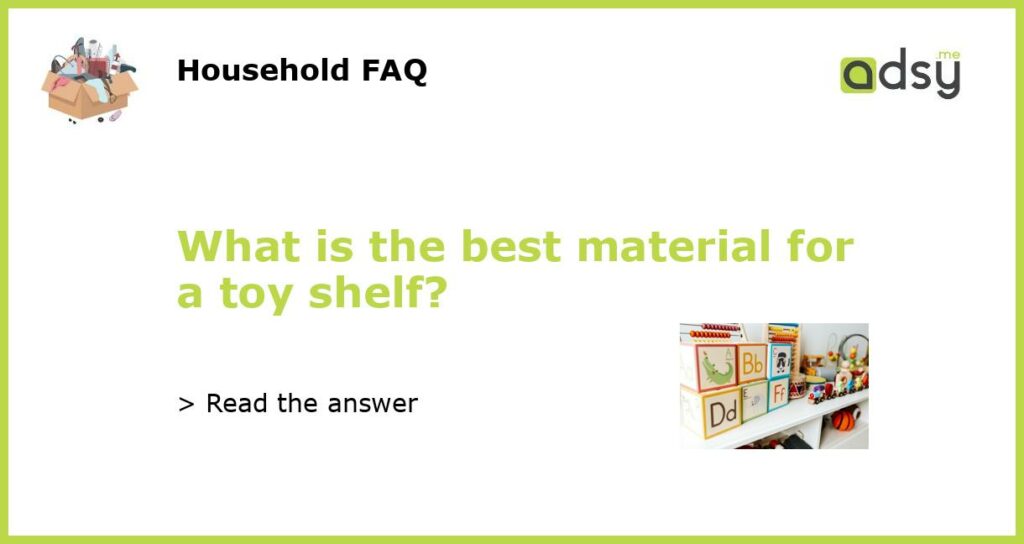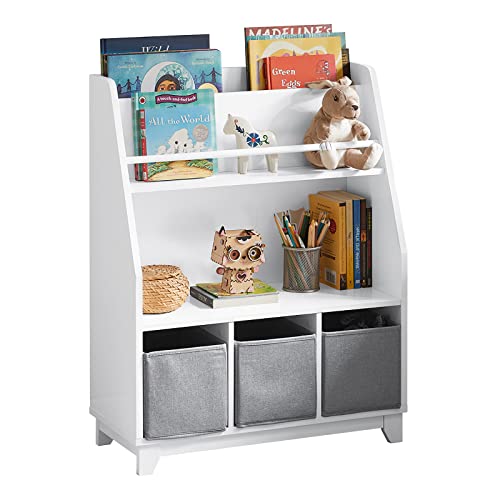The Best Material for a Toy Shelf: A Comprehensive Guide
If you have children, you know how quickly toys can accumulate. From stuffed animals to building blocks, it can be challenging to keep everything organized and tidy. One solution to this problem is investing in a toy shelf. But with so many options available, how do you know which material is the best choice? In this guide, we will explore the pros and cons of the most popular materials for toy shelves, helping you make an informed decision.
Wood: Timeless Beauty and Durability
Wood is a classic choice for toy shelves, and for good reason. It offers a timeless beauty that can enhance the aesthetic appeal of any room. Additionally, wood is known for its durability, making it a long-lasting and sturdy option for holding heavy toys.
One of the main advantages of wood is its ability to blend seamlessly with any décor. Whether your home has a traditional or modern style, a wooden toy shelf can be customized with different finishes and colors to match the existing furniture. This versatility is particularly beneficial if you envision using the toy shelf in other areas of your home in the future.
However, it’s important to note that wood toy shelves can be more expensive than shelves made of other materials. They also require occasional maintenance, such as polishing and minor repairs. Despite these factors, investing in a high-quality wooden toy shelf can be a wise long-term choice.
Plastic: Affordability and Easy Cleaning
If you’re looking for a budget-friendly option that is easy to clean, plastic toy shelves could be the ideal choice for you. Plastic is lightweight, making it easy to move around the room or even transport to different areas of the house. This feature is especially beneficial if you have limited storage space and need to reconfigure the room frequently.
Additionally, plastic toy shelves are typically less expensive than those made of wood or other materials. They are readily available in a wide range of colors and designs, allowing you to choose one that complements your child’s room or play area. Plastic shelves can also be a good option for younger children, as they are less likely to cause injury if accidentally bumped into or knocked over.
However, plastic is not as durable as wood or metal, and over time, plastic shelves may become warped or cracked. They may not hold up as well under heavy loads, so it’s important to consider the weight and size of the toys you plan to store on them.
Metal: Strength and Stability
For a combination of strength and stability, metal toy shelves are an excellent choice. Made from materials such as steel or iron, these shelves can endure heavy toys and provide reliable support.
Metal toy shelves often feature wire racks, allowing air to circulate and preventing the buildup of dust. This is particularly beneficial for sensitive toys or stuffed animals that require proper ventilation. The metal construction also makes it easy to wipe clean, making maintenance a breeze.
While metal shelves are generally more expensive than plastic options, they are often more durable and long-lasting. They also offer a sleek and modern look, making them an attractive addition to any room. Some metal toy shelves come with adjustable shelves, allowing you to customize the height and configuration according to your needs.
Fabric and Canvas: Lightweight and Portable
If you’re looking for a portable and lightweight option, fabric or canvas toy shelves may be the best choice for you. These shelves are typically made of fabric stretched over a lightweight frame, resulting in a flexible and collapsible design.
Fabric toy shelves are easy to move and can be folded down for storage or transportation. This makes them a practical choice for families who frequently travel or need a portable storage solution for toys. Additionally, fabric shelves often come with multiple compartments and pockets, allowing for easy organization and accessibility.
However, fabric toy shelves may not be as sturdy as those made of wood or metal. They may not be suitable for heavy or bulky toys, as the fabric may sag or tear under pressure. It’s also important to regularly clean fabric shelves to prevent the accumulation of dust or stains that may be difficult to remove.
Combination Materials: The Best of Both Worlds
Many toy shelves on the market are made from a combination of materials. For example, a wooden frame with fabric or plastic storage bins. These combination shelves offer the benefits of different materials, allowing you to enjoy both beauty and functionality.
Combination toy shelves can be versatile and adaptable to your specific needs. You can choose a design that features multiple types of storage, such as open shelves, bins, and even drawers. This variety allows you to organize toys based on size, type, or frequency of use.
Before making a purchase, it’s essential to consider the quality and construction of combination toy shelves. Ensure that all materials used are of high quality and securely fastened to provide stability and safety for your child.






